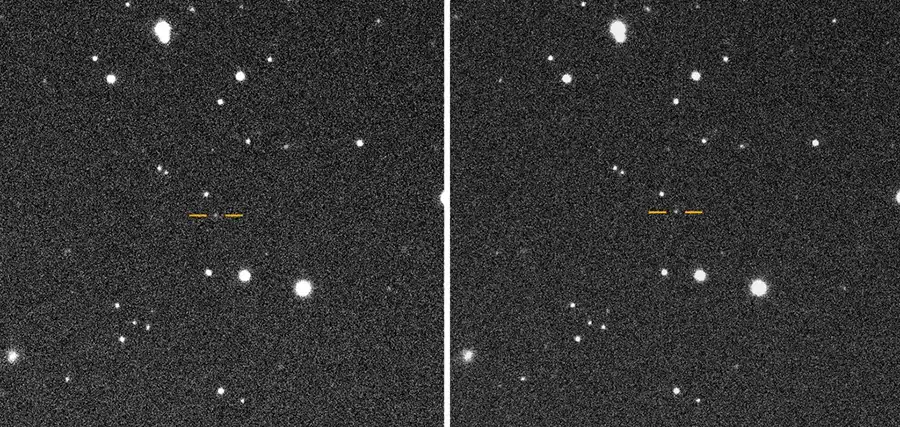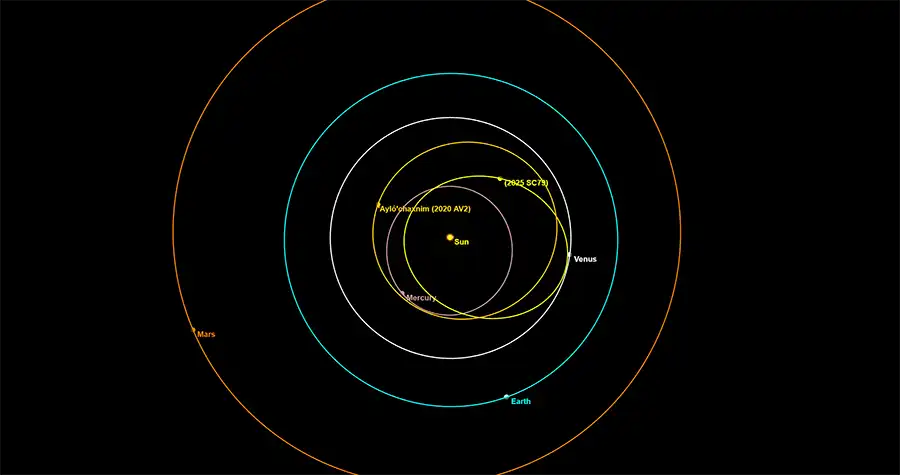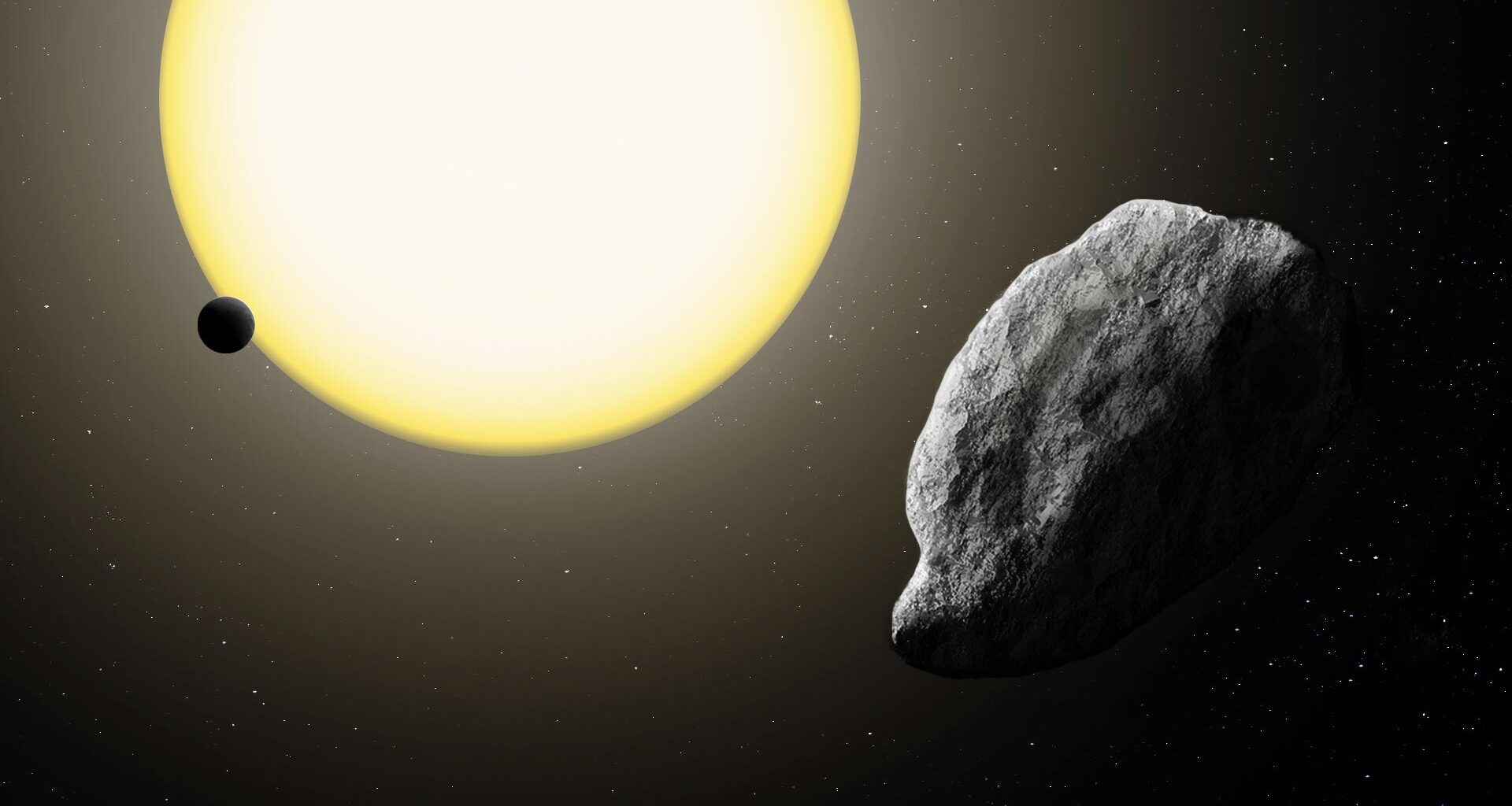Astronomers have discovered an asteroid in the inner Solar System whose orbit lies almost entirely within the orbit of Venus. It is only the second known object of its kind.
 Asteroid 2025 SC79 in images from the Dark Energy Camera. Source: Scott S. Sheppard
Asteroid 2025 SC79 in images from the Dark Energy Camera. Source: Scott S. Sheppard
The discovery was made on September 27 by astronomer Scott Sheppard while studying images taken by the Dark Energy Camera. It is mounted on Victor Blanco’s 4-meter telescope at the Cerro Tololo Observatory. The newly discovered object has been designated 2025 SC79.
2025 SC79 has attracted the attention of the scientific community due to its unusual orbit. It lies almost entirely within the orbit of Venus. 2025 SC79 completes one orbit around the Sun in just 128 days. At perihelion, it approaches the Sun at a distance of 0.45 AU (67.3 million km). The diameter of 2025 SC79 is estimated at 700 meters.
Prior to this, astronomers knew of only one object with similar orbital characteristics — asteroid 594913 ꞌAylóꞌchaxnim, discovered in 2020. The small number of asteroids in inner Venusian orbits is explained by the difficulty of detecting them. They can only be observed at twilight, when the Sun is just rising or setting.
Although the orbit of 2025 SC79 reaches the inner part of Mercury’s orbit, its aphelion sometimes slightly exceeds the perihelion of Venus’s orbit. Thus, it is not completely within Venus’ orbit and may one day intersect with this planet. Such a convergence could shift it into a different orbit. If such a “twilight” asteroid approaches Earth, it could pose a serious threat due to the difficulty of detecting it.
 Orbit of asteroid 2025 SC79. Source: Tony Dunn / Orbit Simulator
Orbit of asteroid 2025 SC79. Source: Tony Dunn / Orbit Simulator
It is also worth noting that due to its small size and proximity to the Sun, 2025 SC79 is strongly affected by the so-called YORP effect — a combination of sunlight scattering from the surface and its own thermal radiation. It could destroy the asteroid in less than a million years.
In any case, the discovery of 2025 SC79 may allow astronomers to obtain more accurate information about how many asteroids are hidden in the vicinity of the Sun and have so far avoided detection. This, in turn, will allow us to assess the degree of threat they pose to our planet.
Earlier, we reported on the discovery of a new quasi-moon of Earth.
According to Sky & Telescope

